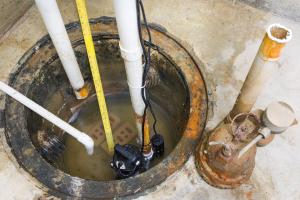
Sump Pump Care: Essential Maintenance for a Dry Basement
Maintaining a functional sump pump is crucial for preventing basement flooding and water damage. Regular sump pump maintenance ensures that this essential component of your home’s waterproofing system is ready to handle excess water effectively. Here’s a comprehensive guide to help you keep your sump pump in optimal condition.
Understanding the Importance of Sump Pump Maintenance
Sump pumps play a vital role in protecting your home from water damage by redirecting excess water away from the foundation. Regular maintenance is essential to ensure that the pump operates efficiently when needed, especially during heavy rainfall or melting snow. Neglecting maintenance can lead to malfunctions, leaving your basement susceptible to flooding.
Performing Visual Inspections
Start your sump pump maintenance routine with a visual inspection. Check for any visible signs of damage, such as cracks or rust, in the pump and its components. Ensure that the discharge pipe is securely attached and free from obstructions. A quick visual check can reveal potential issues that need prompt attention.
Testing the Float Switch
The float switch is a critical component that activates the sump pump when the water level rises. Test the float switch by pouring water into the sump pit until the pump turns on. Ensure that the switch moves freely and does not get stuck. If the float switch fails to activate the pump, it may need adjustment or replacement.
Cleaning the Sump Pit
Over time, debris, dirt, and sediment can accumulate in the sump pit. Regularly clean the pit to prevent clogs and ensure proper pump function. Remove any debris, mud, or gravel that may hinder the float switch or impede the pump’s operation. A clean sump pit promotes optimal pump performance.
Checking the Discharge Line
Inspect the discharge line to ensure that it is free from obstructions. The discharge line carries water away from the sump pump to prevent it from flowing back into the basement. Verify that the line is not clogged with debris and that it directs water at least 10 feet away from the foundation to prevent water from re-entering the basement.
For additional tips on sump pump maintenance, visit home-radiators.com for expert insights.
Testing the Backup Power Source
Sump pumps often rely on electricity, and power outages during storms can compromise their functionality. If your sump pump has a backup power source, such as a battery or a generator, test it regularly. Ensure that the backup power activates the pump when needed, providing continuous protection even during power interruptions.
Inspecting Check Valves
Check valves are crucial components that prevent water from flowing back into the sump pit after the pump has discharged it. Inspect the check valve for any signs of damage or malfunction. If the valve is not working correctly, water may return to the pit, causing the pump to operate more frequently and potentially leading to failure.
Lubricating Moving Parts
Sump pumps have various moving parts that may benefit from occasional lubrication. Consult the manufacturer’s guidelines and apply lubricant to the pump’s bearings or other moving components as recommended. Proper lubrication reduces friction and contributes to smoother pump operation.
Testing the Pump Operation
Regularly test the overall operation of the sump pump to ensure it activates and pumps water as intended. Pour a bucket of water into the sump pit to trigger the pump and observe its performance. If the pump fails to turn on or struggles to remove water, it may indicate a problem that requires immediate attention.
Scheduling Professional Maintenance
While homeowners can perform many aspects of sump pump maintenance, it’s advisable to schedule professional inspections annually. A qualified technician can assess the pump’s condition, test its components thoroughly, and address any potential issues. Professional maintenance provides an added layer of assurance that your sump pump is in top-notch condition.
Conclusion: A Dry Basement Begins with Maintenance
In conclusion, sump pump maintenance is a proactive measure that safeguards your home from potential water damage. Regular inspections, testing, and cleaning contribute to the pump’s reliability and effectiveness. By following these maintenance tips and scheduling professional inspections, you can ensure that your sump pump is ready to protect your basement when it matters most.
For expert advice and additional resources on sump pump maintenance, visit home-radiators.com.







